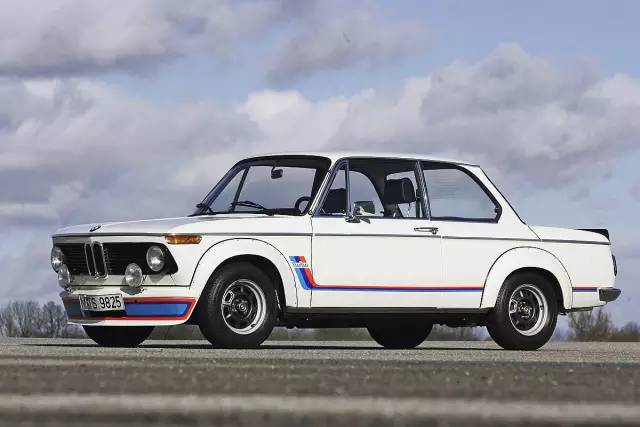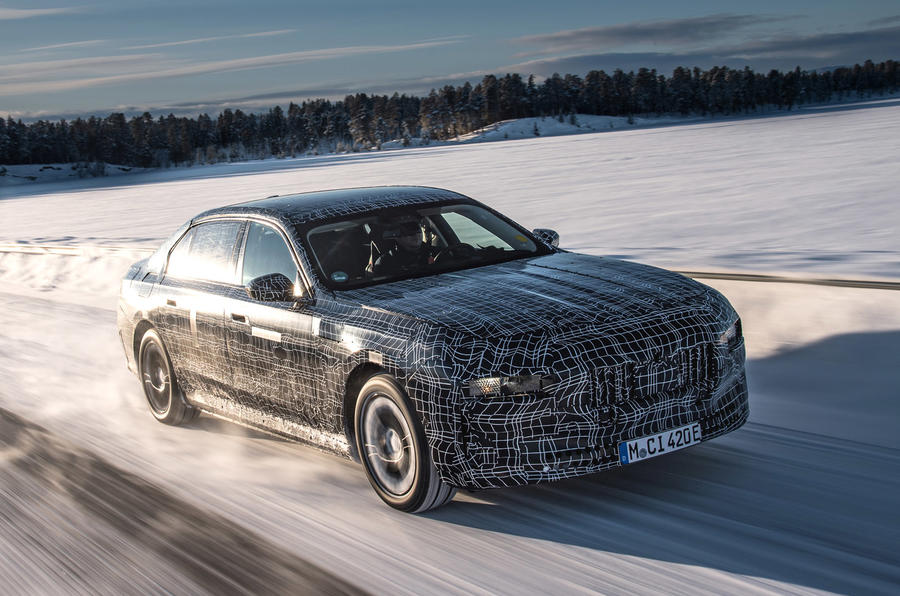文 | Joey
What does the BMW i7 mean to BMW?
About 20 years ago, I visited the Shanghai Auto Show for the first time. At that time, the Shanghai Auto Show was almost no different from a department store opening in my impression. Crowds of people surrounded each car, with a few models standing by the cars and some seemingly worthless gifts offered at the booth. These gifts included some storage bags (similar to those given at the supermarket), some catalogs introducing car models (easily available at dealerships), and even some peripherals such as posters with the owner’s key visual.

At that time, I got a BMW 7 Series poster, which hung by my bedside for the next fifteen years. It was not because I considered the 7 Series as my dream car but simply because a BMW car had to be a good car in my mind. Although it did not match my style, it was correct to keep it there.
Indeed, it is already more than 20 years later today, and I am not surprised I cannot afford the 7 Series at all. Nevertheless, I do not feel regretful at all because, in contrast with most brands, BMW’s quintessence lies in sportiness, and the 7 Series, as the top flagship executive car, can hardly surpass Mercedes-Benz in luxury, even slightly behind Audi’s A8 with its executive positioning and technological attributes in people’s impression.

After all, in the previous era, people were quite familiar with expressions like “Drive a BMW, Sit in a Benz” and “The essence of BMW lies in the 3 Series, and the essence of Mercedes-Benz lies in the S-Class.” They even acted on it when buying a car.
However, nothing is constant.
Drive a BMW, Sit in a BMW
No one wants to make only the limited money, so even the mighty BBA is continuously making changes. For example, Mercedes-Benz’s most significant products in recent years take two different routes. On the one hand, it is the high-end, even higher-end S-Class and Maybach, which have been leading the way. On the other hand, Mercedes-Benz is trying its utmost to launch popular models such as the C-Class. After all, even if a 5 million car is sold well, it cannot match the considerable profit brought by a 300,000 car with high sales.
 It is obvious that the Mercedes C-Class and Audi A4L share the same design concept. They are undoubtedly the wealth codes and profit cows for their respective brands. However, this poses a challenge for BMW, even though the BMW 3 Series still maintains a relative advantage in the specific market. Faced with strong competitors’ pressures, BMW must seek changes.
It is obvious that the Mercedes C-Class and Audi A4L share the same design concept. They are undoubtedly the wealth codes and profit cows for their respective brands. However, this poses a challenge for BMW, even though the BMW 3 Series still maintains a relative advantage in the specific market. Faced with strong competitors’ pressures, BMW must seek changes.
Unlike Mercedes’ top-down product adjustment strategy, BMW has been focused on its sporty 3 Series from the beginning (after all, who could resist a BMW 3 Series?). Therefore, the only way to change is from the bottom up. If “driving a BMW and riding in a Mercedes” used to be a popular phrase, BMW started to change their brand positioning a couple of years ago to “drive a BMW and ride in a BMW”.
This change was first made with the 5 Series, after all, as a mid-to-large-size sedan, it not only meets business needs but also the need for driving pleasure (in other words, the 5 Series is expensive, but not expensive enough to make the owner hire a driver). Even earlier, the 3 Series had already begun to adjust. Unlike the previous generation’s drivetrain, which was geared towards aggressive driving, the current generation 3 Series has become more comfortable.
With a softer power delivery and suspension, it’s clear that this is not the 3 Series that every young speedster dreamed of. However, the benefits of doing so are obvious. Since the 5 Series has already become both comfortable and sporty, if the already good driving 3 Series becomes even more comfortable, this will obviously expand BMW’s audience while maintaining its reputation for good handling. Put simply, the goal is to give more people with different needs a reason to choose BMW.
Of course, in the process of this makeover of the brand’s product line, the presence of the BMW 7 Series should never be overlooked. It has undergone changes from a mature and stable product style to a young, sporty, and even more technologically oriented style, which is a strategy similar to the story of the Chinese general, Tian Ji, who chose his horses. After all, even if luxury is not its greatest strength, adding sportiness and technology will make it more balanced.
Removing individuality to meet the market’s needs is a mature performance both for an individual and for an automotive brand. This performance has also been recognized by the market. Although BMW is still lagging behind Mercedes in terms of profitability, it has achieved a historic high of €111.239 billion in total revenue and €1.24 billion in net profit.
More importantly, BMW has surpassed Mercedes-Benz in car sales, both in the Chinese market and globally, having delivered 2.52 million cars in 2021 worldwide. The good news for BMW is that in the competition amongst the top three German luxury car brands of BBA, BMW, being both sporty and comfortable, has won this battle.
However, this round is coming to an end and a new era has begun.
How important is the i7?
Electrification is this new era’s new game. Actually, the major traditional car companies have been planning and discussing 2025 and 2030 for a while now, not just in financial reports. They have long had planning in place for when to launch electric cars, how many, and what proportion of products to cover.
But what is more important is to promote their product lines in an orderly manner. In this regard, both Mercedes-Benz and BMW have already had fully systematized product promotion strategies in 2021. For example, the EQ series has now completed the product layout for A, B, C, and S.

From BMW’s point of view, they have been enthusiastically promoting the introduction of electric cars with different types of products and positioning, starting with the iX, i4, and iX3 series. It seems that BMW’s electric vehicle system appears a bit scattered compared to Mercedes-Benz, which lays out the EQ series according to traditional level systems.
However, do not forget that this is just the beginning, the starting point of the 2025 plan. In the future, based on these vehicles of different positioning and functions, BMW will possibly construct various electric product lines. Among them, the i7 occupies the most important position.

According to BMW’s plan released in the previous financial report, the BMW Group will mass-produce 15 products this year in 2022, aiming to cover 90% of the segmented market. This confirms my speculation that currently every BMW electric vehicle model may become the origin of a series.
Among them, the i7’s goal is quite clear: it is the 7-series of the electric vehicle era. The i7’s mission is to carry the flag of BMW’s luxury and sportiness, and more importantly, to take on the previously launched Mercedes-Benz EQS. Thus, determining the tuning becomes particularly important.
From the known information so far, the i7 has almost no major differences in overall design compared to the new 7-series gasoline version. To a large extent, I believe that from the dimensions and design language, as well as many comfort and technology configurations, the i7 will adhere to the gasoline version of the 7-series. This is obviously different from the EQS and S-class models of Mercedes-Benz in essence, because these two models have differences in appearance. For example, the EQS gives up the wide and comfortable headroom of a traditional energy D-class car in order to pursue lower air resistance. This change makes the EQS look less like the luxurious D-class sedan that people are familiar with.
Of course, such changes have advantages and disadvantages. For Mercedes-Benz, products under the new energy system should meet the needs of the energy system, and there is no reason to inherit many elements from traditional cars. For BMW, the gasoline version of the 7-series itself has undergone a new design and manufacturing concept. As I just said, BMW needs to achieve a balance between driving and luxury, and the changes made by the 7-series are completely unnecessary to spend energy and cost on another set for the i7.

More importantly, since its biggest competitor is basically the EQS, its selling price should not differ too much. But don’t forget that in the field of pure electric vehicles, BMW has lost the differentiated strategy advantage brought by positioning adjustments in the internal combustion engine series. That is to say, you can no longer avoid the advantage of Mercedes-Benz’s top luxury by saying it’s comfortable and easy to drive (after all, EQS’s wind resistance coefficient of 0.20Cd is not just because it looks good, it must also be because it drives well).
In a head-to-head competition, it’s not just about hard power, but also about nimble strategy and keenly capturing market demand. Currently, BMW’s changes in the gasoline car field are commendable and have achieved very good results. But whether this works in the new energy track may need to be re-evaluated by the results.
After all, you are changing, and your opponent is also changing. The faster you can change, and the better you can change, the more you can win the market. In this regard, not only the flagship i7 of the brand’s electrification, but also the greater responsibility it shoulders.

Soon, the i7 should be officially launched, and I really want to know its details and what kind of changes it can bring out beyond its appearance.
This article is a translation by ChatGPT of a Chinese report from 42HOW. If you have any questions about it, please email bd@42how.com.
